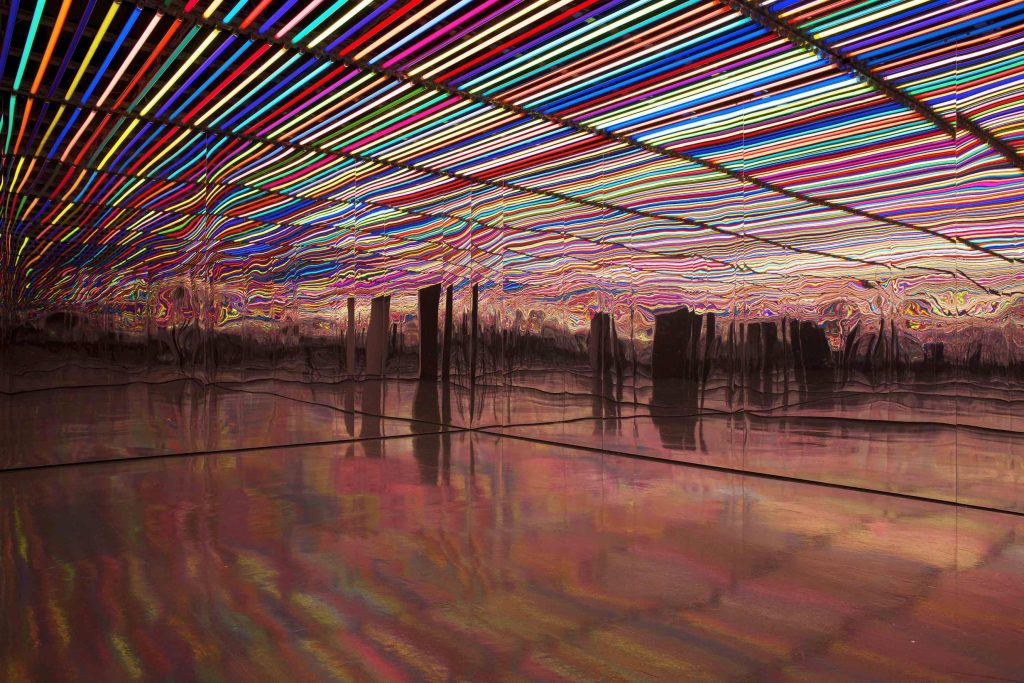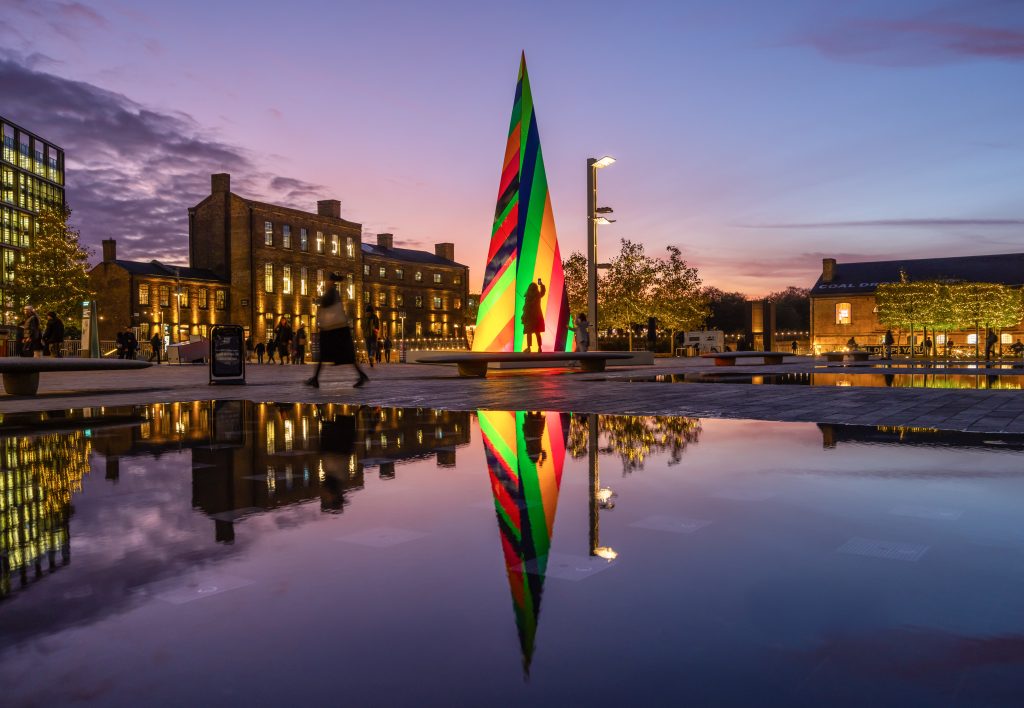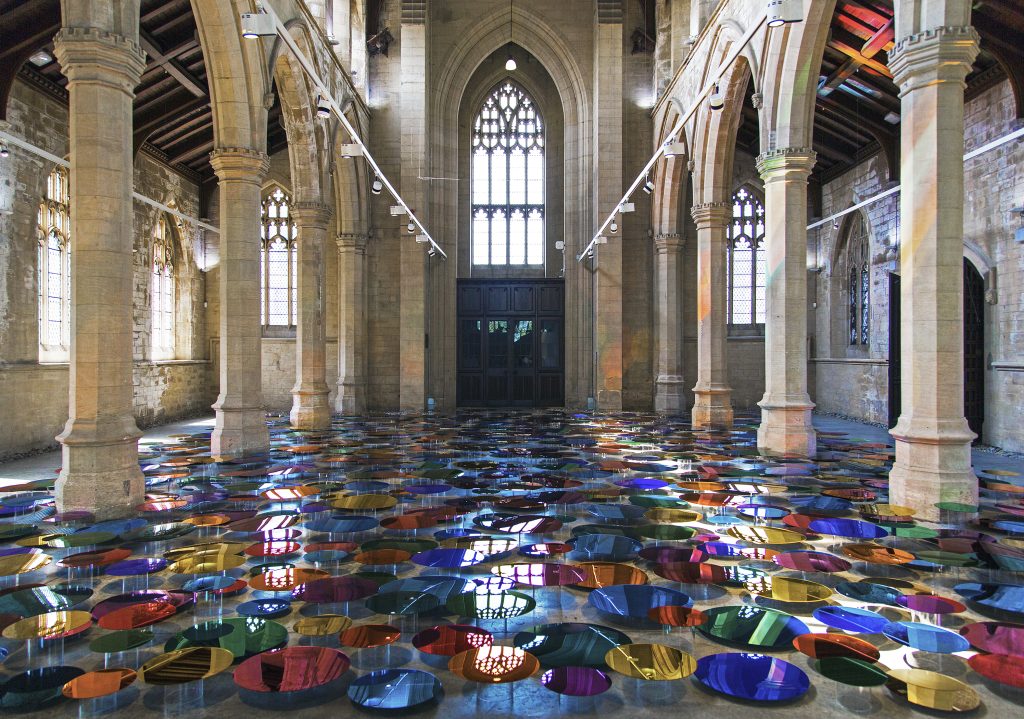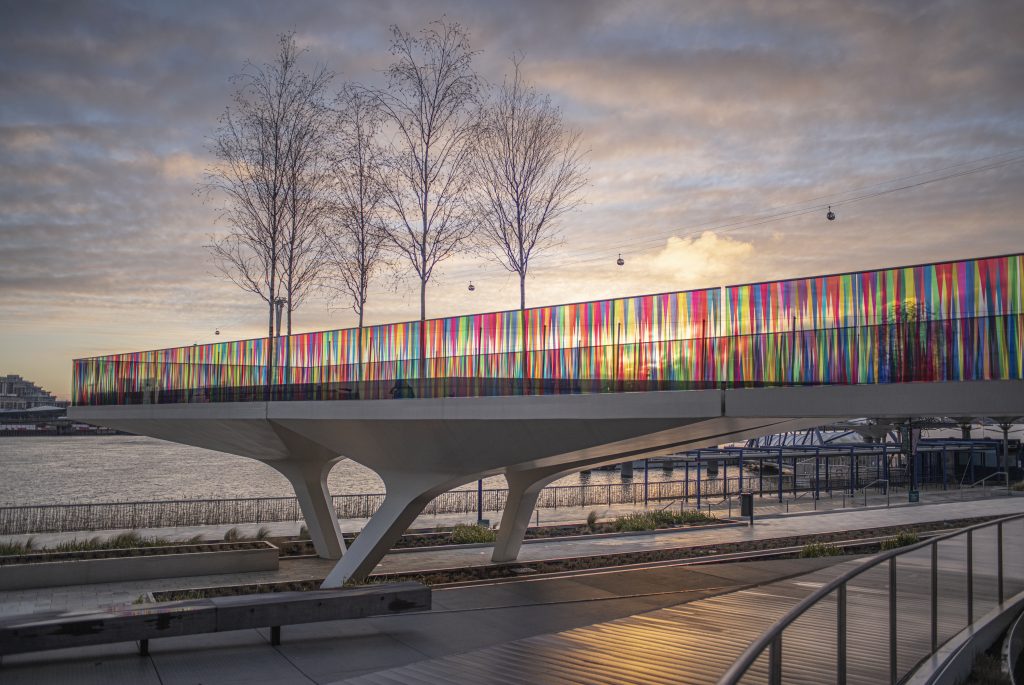Opening the Artist’s Eye | Rekindling design creativity
I learned elementary color theory before I could even read. It helped that both my parents worked as artists, and I lived in a house where art was in abundance. I realize that this is highly unusual, and that I am fortunate. My mother (who makes surface-based architectural paintings and drawings) had a light-filled studio in the house, and my father (who made figurative and dreamlike sculptures from wax, plaster, bronze, and fiberglass) worked in a studio outbuilding in the garden. My methods of play as a child were to dabble with their artist materials, whether it was clay and plaster or acetate and inks.
When I graduated from the Glasgow School of Art, I was out of money. I moved back home with my parents and secured a few jobs, working as a video editor for an advertising agency and then as a shop assistant for a large retailer as well as an events steward at my local arena. During my three years working at large events as a steward, I paid close attention to how stage lighting and sets were being installed and managed. I felt a buzz from the live element of the event, and I was hooked.
As a reminder of the indispensability of light, I recently experienced a planned, full-day power outage at my house on a dark autumnal day. Not only was it a massive inconvenience, but it was also prohibitive to my work, as my studio is at home.
Throughout the day, I began thinking about electricity and how pivotal it has become to our day-to-day lives. I instinctively flicked switches and no light came on, so I lit cozy candles; I forgot I couldn’t boil a kettle, so I had to boil a pan of water on the gas hob; I had to cancel online video meetings since Wi-Fi was unavailable, so I rang people on the landline; my laptop ran out of charge; the food in the freezer started to defrost; and the there was no heat. It felt like the Middle Ages temporarily, and I would not have wanted to be alive then.
On this dull and power-less day, the swatches of color and my vibrant collages pinned to my ideas board reminded me that color only properly comes to life when there is a light source. Stating the obvious: without light we cannot see color.

Living in the Northern Hemisphere (especially in the North of England), I grit my teeth as winter approaches, when the dark nights draw in and as daylight saving hours step into play. I have Seasonal Affective Disorder, and it affects me emotionally, physically, and psychologically. I must search hard for´the glimmers of hope, color, and light in and among the darkness. Autumnal color is beautiful and rusty, with earthy and warm tones. Winter is full of sparkly fairy lights and rich berry hues. But these joyous and memorable moments of color are fleeting and typically transient. Over the years, I have employed coping strategies at this time of year, which includes my work as an artist. Through my work, I have my very own light-box—it is my therapy.
My days working as an artist are ever changing and fluid. I sketch and draw, write proposals, design decks, photograph my work, converse with people about my projects at every stage, send invoices, perform site visits, attend openings, travel, and try to remember to breathe, eat, and relax (the latter I struggle with endlessly). As artists and designers, we are constantly juggling jobs and replacing one hat with another.



With that said, here are my top five tips for young creatives:
- Look around. Pay close attention to the world around you; see what it lacks and what materials/colors are being used. With this insight, you can then design work in the space that feels like it “belongs.”
- Always attend site visits. This is one of the earliest bits of advice I received. If you live close by and are familiar with the space, live far away and can’t/don’t want to travel, or you believe it is unnecessary—think again! Always go (or ask for extensive videos/photos) to the space for which you are designing. You might notice something crucial that you have never seen before.
- Be brave and bold. Don’t add colors or lighting elements just for the sake of it. More is not always more. Subtlety is elegant and often overlooked. It’s brave to pare things back.
- Be conceptual. The work should have a story and a reason for existing. People want a way into the work and an insight into the artist’s/designer’s mind. Everything must have a rationale for its place in the finished piece.
- Be kind. It should go without saying, but treat the people you are working alongside with respect, dignity, and kindness. Listen, practice patience, and put yourself in others’ shoes. It’s a small world and news travels fast about who is good (and troublesome) to work with in every field.
In my world of vivid color and lights—two things that are synonymous with joy and optimism—there are a lot of unknowns as well as miseducation. There must be a deep and thorough understanding of the mechanics and science behind color and light before you can use them freely and instinctively. I am still learning as my tool box is expanding (e.g., new and ever-changing lighting technology), but I love color and light passionately and have a lifetimeworth of ideas for these media.
THE AUTHOR |
Liz West is an artist known for her wide-ranging works, from the intimate to the monumental. Using a variety of materials and exploring the use of light, she blurs the boundaries between sculpture, architecture, design, and painting to create works that are both playful and immersive.


